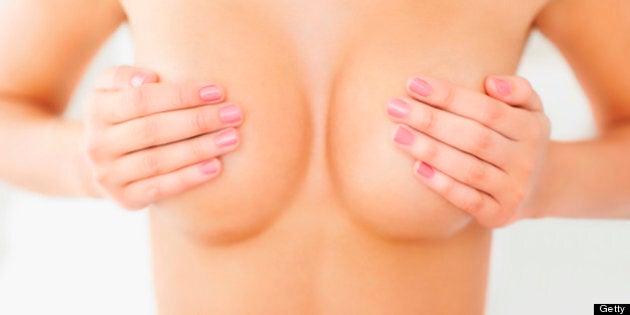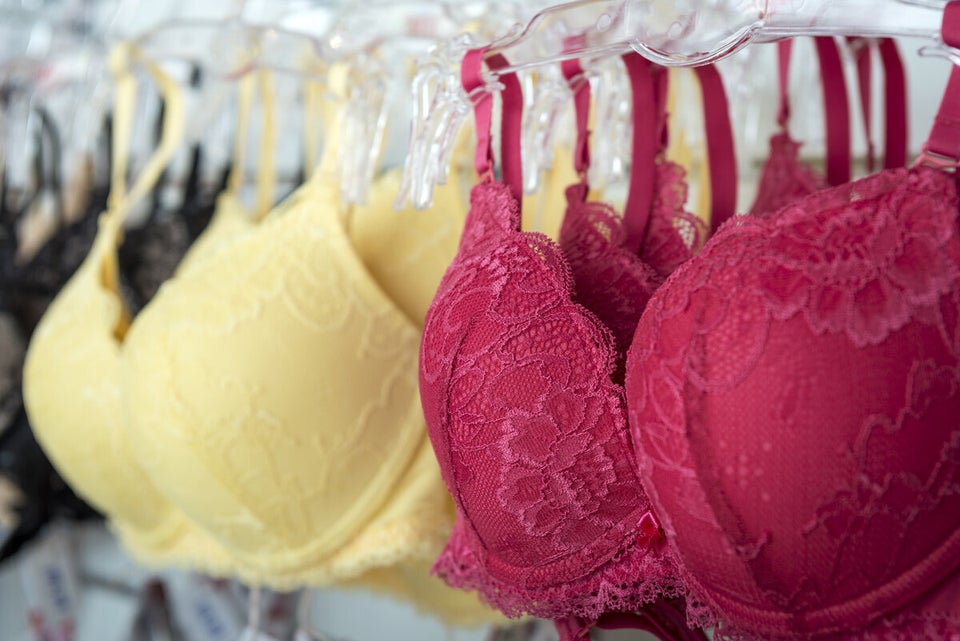

Women’s breasts have been a focus of fashion, sexual attraction, and health since the beginning of time. We dress them, test them, change them, talk about them, and sometimes even fear them — but how much do we really know about them? So much of the attention we give to our breasts is (rightly) about how to keep them healthy. But there’s a lot to learn and discover about them beyond just how they feel and what they look like.
Here, 12 fascinating breast facts that may surprise you:
Breasts Are Bigger Than Ever (And So Are We)
According to the fashion industry newspaper Women’s Wear Daily, the average breast size among women in the United States has evolved over time, from a 34B to a 36C to — within the last decade — a 36DD! The reasons for this aren’t scientifically documented, but experts believe it may be due in part to increased rates of obesity.
“The obesity epidemic explains why the average bra size in Americans is greater than in the rest of the world and has steadily increased over the last 10 years,” says Lauren Streicher, MD, assistant clinical professor of obstetrics and gynecology at the Feinberg School of Medicine and a physician at Northwestern Memorial Hospital in Chicago. One fact about your breasts is that a significant portion of them is made up of fat. Dropping some pounds can do wonders for your health and your waistline, but your bra size may get smaller, too, Streicher explains. On the flip side, gaining weight could increase your bust line.
We Always Want The Breasts We Don't Have
According to data from the American Society of Plastic Surgeons, breast augmentation has been the most commonly performed cosmetic surgical procedure since 2006, with approximately 296,000 breast augmentation surgeries in 2010 — a two per cent increase from the year before. Interestingly, more than 170,000 of those were breast reduction and lift surgeries. Breast reconstruction surgery was also up in 2010, with more than 93,000 procedures performed.
Bras Weren't Invented Until The 19th Century
Before the late 19th century, women used a corset, a tightly fitting undergarment extending from below the chest to the hips, to elevate their breasts and accentuate the waist. During the early 20th century, garments more closely resembling contemporary bras became available, with large-scale production starting in the 1930s. That’s also when bra manufacturers started to use the term “cup” with letters of the alphabet, along with stretchable material that could accommodate different breast sizes.
Being properly fitted for the right bra in the right style for you may give you the support and uplift you want or need. Precise estimates vary, but it's safe to say that many American women are wearing the wrong size bra and could benefit from a knowledgeable fitter in a lingerie store. Standing up a little straighter will also improve the profile of your healthy breasts. “Posture is probably more important than anything," Streicher says.
More Women Are Breastfeeding
According to the Centers for Disease Control and Prevention, breastfeeding rates have increased from 2007: Five per cent more women are breastfeeding their babies three months of age, and four per cent more are still doing it at six months. Other stats show that more black women, women with higher incomes, and women 30 years and older are breastfeeding.
Around the country, birthing hospitals have started to discontinue giveaways of free baby formula in an effort to encourage even more new mothers to breastfeed their children. According to the U.S. Department of Health and Human Services Office on Women’s Health, breastfeeding protects babies from illness (including diabetes, according to one recent study), saves money, and encourages bonding between mother and child.
Some Places...You Can Go Topless
It may surprise you to learn that it’s legal to bare your breasts in a number of U.S. states, including New York, Maine, North Carolina, Ohio, Wisconsin, Texas, New Mexico, Colorado, Oregon, and California. Here in Canada, several provinces have nude beaches.
Hey, Look Up Here!
We're not surprised with this one: A recent study conducted by researchers from New Zealand’s University of Wellington found that 47 per cent of men stare at a woman’s breasts at first glance, while only 20 per cent focus on the face. The researchers also found that men glance at breasts for longer than any other body part, which they say is likely because healthy breasts are aesthetically pleasing, no matter what their size. The least looked-at body parts? Arms and feet.
Your Breasts Change Every Month
Feel like your bra is a little fuller this week? It may not be your imagination. The fluctuations in hormone levels during your menstrual cycle can lead to changes in breast size over the course of each month. Many women experience cyclical changes such as mild swelling, pain, and tenderness of the breasts just before their periods start, but these symptoms may occur at other stages of your cycle, too, such as during ovulation.
It’s also very common for breasts (and nipples) to change in size at different stages of life (such as puberty, childbearing years, and menopause) or to have two different sized breasts. In fact, the majority of women have perfectly healthy breasts that are asymmetrical in size or position. In most cases, the asymmetry is unnoticeable; if you find it significant once you’re an adult, talk to your doctor about breast surgery to correct the imbalance.
Nipple Hair Is Normal
Not everyone has nipple hair, but it is very common, Streicher says. The more hair a woman has all over her body, the more likely she is to have hairs around her nipples. “Just like pubic hair, it will be the same color as your natural head hair color,” she adds. These hairs are rarely cause for concern, but if you want to get rid of them, you can tweeze, laser, or trim them. Dr. Streicher warns, however, that you should “alert your physician if the amount of hair dramatically increases.” That could signal a women’s health condition or another type of medical issue that needs attention.
You Can Have More Than Two Nipples
It’s not a myth! Supernumerary nipple, also known as extra nipples, can grow on places other than your breasts and may even develop breast tissue. In fact, extra nipples are the most common congenital abnormality of the breast and can occur in both girls and boys. Some celebrities, including Lily Allen and Mark Wahlberg, are rumored to have them.
Extra nipples — there can sometimes be more than one — typically develop along “milk lines,” which start in the armpit on each side of the body, run down through the nipples on the breasts, and end at the groin. However, they have also been known to occur on other areas of the body, including on a 22-year-old woman’s foot, as far from the breast as it could get.
Most Lumps Aren't Cancer
A breast lump is a frightening discovery. But keep in mind that 80 to 85 per cent of lumps are benign (not cancerous) and can occur in healthy breasts. Most benign breast lumps are either cysts — fluid-filled sacks — or fibrous, scar-like tissue changes. This fact is especially true for women under 40. Right before your period, healthy breasts may feel a little bit lumpier, and that’s normal. Still, if you find a lump, you should consult with your doctor as soon as possible. It may need to be tested to rule out breast cancer.
Smoking Causes Sagging
A 2007 study concluded that breastfeeding does not contribute to sagging, but cigarette smoking does. University of Kentucky researchers found that smoking breaks down healthy breasts’ elastin, a protein that helps support the breasts.
Of course, even healthy breasts eventually head south. Breasts sag when ligaments that support the breasts lose their elasticity, says Streicher. “This is a result of gravity, time, and differences in breast size,” she explains. The loss of breast tissue because of weight loss, pregnancy, or hormonal shifts can also contribute to sagging.
Breasts Can Be Clues To Other Conditions
Trying to have a baby? Your breasts may show your pregnancy even before your stomach does. Very early in the first trimester, healthy breasts become extremely tender and start growing. Why? Your body is preparing your breasts for breastfeeding. You’ll probably notice a sizable increase during the first three months of pregnancy.
